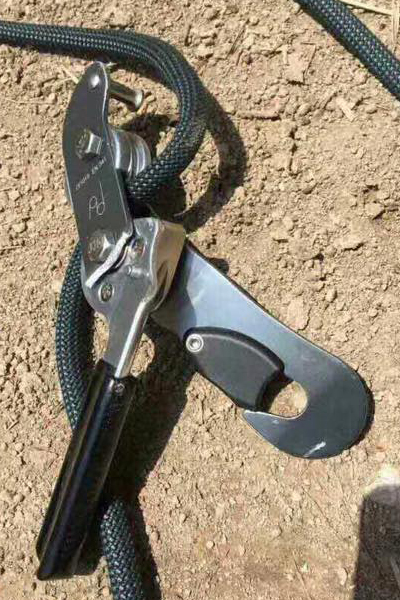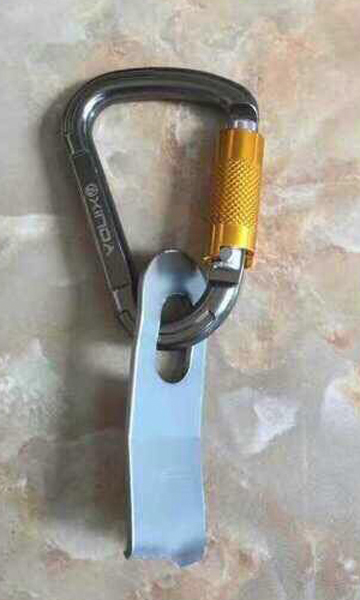|
|
||||||||||||||||||||||||||||||||||||||||||||||||
The stop bobbins is one of several that are all variations of the same basic design. The ones in my collection that I've evaluated are as follows:
|
|
||||||||||||||||||||||||||||||||||||||||||||||||
These bobbins appear to be made by the same Chinese OEM, so I find the difference in allowable rope sizes rather amusing and certainly unreal. I suspect that the differences are due to different descenders being tested at different times, and the rope sizes printed reflect the rope sizes used during the corresponding tests.
These descenders clearly "borrow" a lot of its design features from the Petzl Stop Bobbins. The shape of the frame, the details of the upper bollard, the shape of the lower bollard casting, and the shape of the plastic gate closely resemble those on later (and sometimes earlier) Petzl descenders.
There are a number of things about these bobbins which I dislike, although my opinions have mellowed a bit in the past couple years:
The gate design effectively reduces the risk of having the seat carabiner force the gate open. It also eliminates the corrosion problem that I've had with the metal gates on some of my early Petzl bobbins (the later Petzl bobbins also have plastic gates). Overall, I think the gate looks good, assuming that it holds up under the abuses inherent in serious caving, but the wire gate on the Russian Stop Bobbin, Version B is a worthy alternative.
Aside from the poor quality plating on the Good Makings lower bollard, these are fairly well made. Each gives a better visual first impression than the similar pre-2019 Petzl Stop, but functionally, I don't see a significant advantage of either. If I compare these to the earliest Petzl Stops, I would give a small edge to the Petzls because of their 15% lighter weight and my preference for and aluminum lower bollard.
Several people have expressed concerns with Chinese metallurgy. We do not have enough experience with Chinese-made climbing equipment to know how well we can trust it. I suspect that the Chinese equipment that has passed CE standards testing is fine. One failure posted on Facebook involves a Chinese-made bobbin. What I see in the photos and in the Facebook video looks like the result of user error, not poor metallurgy. It appears that the rappeller clipped into only one of the side plates. When rappelling with only one side plate loaded, any bobbin could fail. We should not dismiss Chinese devices simply out of prejudice; but having said that, I would like to see more independent testing that is not based on testing to pass commercial standards.
 |
 |
| Photos found on Facebook (no copyright) |
|